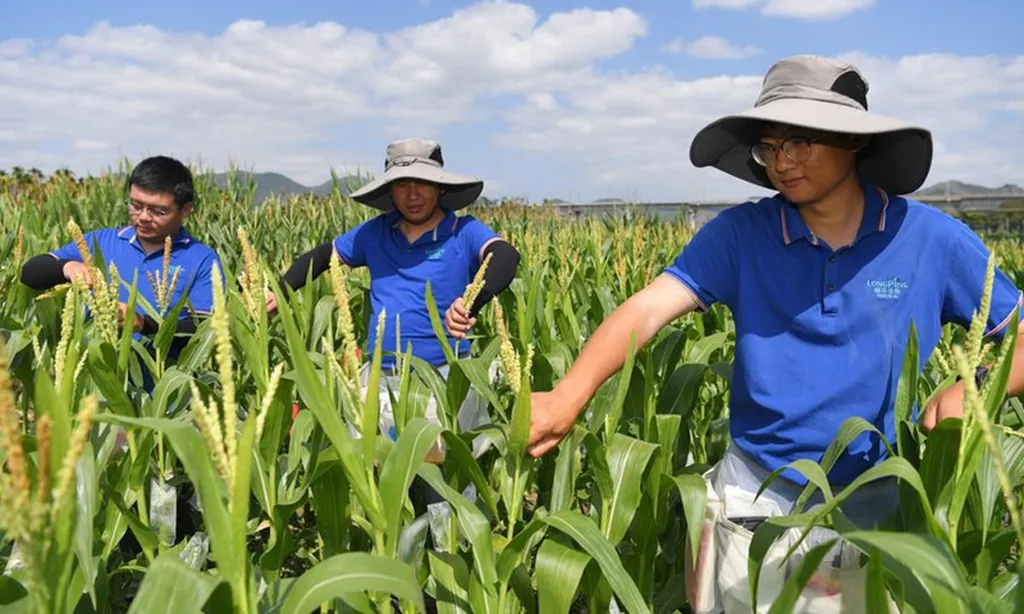In the quest to monitor crop growth with precision, researchers have turned to satellite remote sensing, a tool that offers vast spatial coverage and convenient data acquisition. However, the challenge lies in the sparse high-resolution time-series data due to long revisit intervals and adverse atmospheric conditions. A recent study published in *Frontiers in Plant Science* tackles this issue head-on, proposing a novel method to fill temporal gaps in remote sensing data using generative image processing techniques.
The study, led by Hao Han from the College of Information and Electrical Engineering at Shenyang Agricultural University in China, focuses on paddy and dryland fields as experimental sites. The researchers developed a lightweight super-resolution Generative Adversarial Network (GAN) for image reconstruction. This method aims to enhance the continuity and accuracy of phenological monitoring, which is crucial for understanding crop growth and health.
“Our proposed super-resolution reconstruction method achieves structural similarity index (SSIM) and peak signal-to-noise ratio (PSNR) values of 0.834 and 28.69, respectively,” Han explained. “This outperforms mainstream approaches in reconstructing heterogeneous remote sensing data.” The improved data continuity allowed for more accurate phenological metric extraction, which is essential for farmers and agronomists to make informed decisions.
The study found that the revisit intervals of remote sensing imagery for the two test sites improved significantly, from 6.40 and 6.63 days to 5.70 and 5.88 days, respectively. This enhancement in temporal resolution is a game-changer for the agriculture sector, enabling more precise and timely monitoring of crop phenology.
Four smoothing techniques were applied to analyze phenological metrics, with Savitzky–Golay filtering yielding the most accurate and robust results. Although some discrepancies were observed between the results obtained using the reconstructed data and those based on the original datasets, the proposed method demonstrated smaller deviations from benchmark datasets.
Compared with conventional interpolation-based gap-filling approaches, the framework demonstrated marked improvements in the accuracy of phenological extraction. It also delivered superior spatial resolution and robustness relative to the Harmonized Landsat and Sentinel (HLS) dataset. “Our approach effectively fills temporal gaps in satellite imagery, enhances data continuity, accurately captures key phenological turning points, and enables precise crop phenology monitoring at high spatial and temporal resolution,” Han added.
The implications for the agriculture sector are substantial. Accurate and timely phenological data can help farmers optimize planting and harvesting schedules, improve crop management practices, and enhance overall productivity. This research paves the way for more sophisticated and reliable remote sensing techniques, which are crucial for sustainable agriculture and food security.
As the agriculture industry continues to embrace technology, the integration of advanced image processing techniques like those proposed by Han and his team could revolutionize how we monitor and manage crops. The study not only addresses current challenges but also sets the stage for future developments in the field, promising a more efficient and data-driven approach to agriculture.

